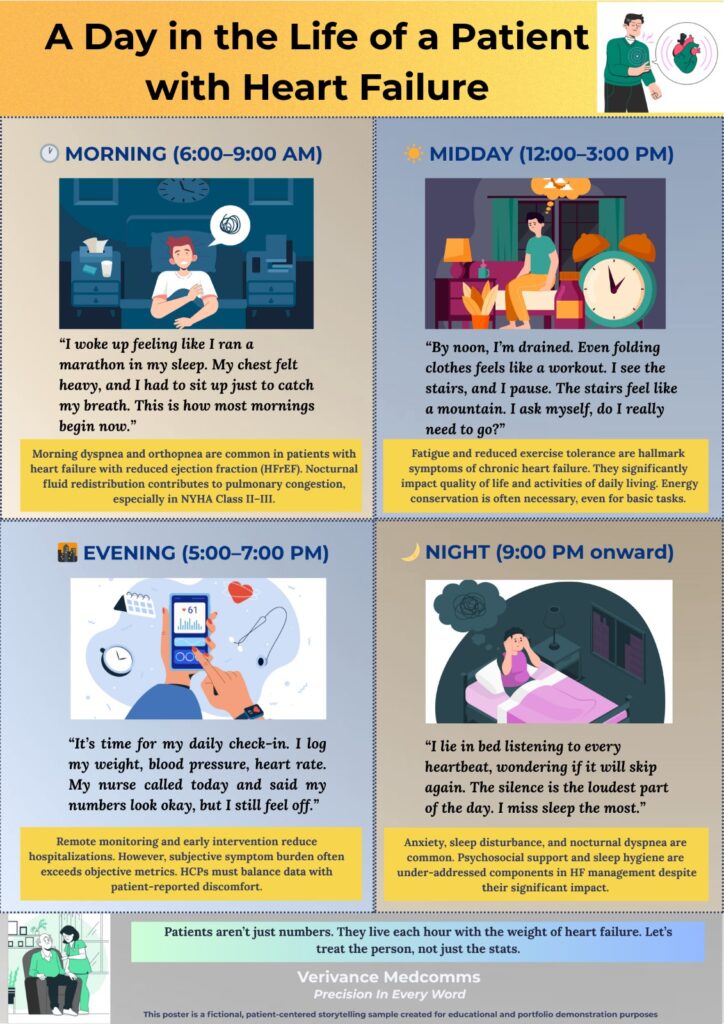Not Just a Diagnosis: Living Every Hour with Heart Failure
“I woke up feeling like I ran a marathon in my sleep.”
For millions living with heart failure, this isn’t just a bad morning — it’s their every day.
At Verivance, we believe data tells a story, but patients live it. And sometimes, the most critical insights come not from lab results, but from lived experience.
Understanding Heart Failure Beyond the Numbers
Heart failure with reduced ejection fraction (HFrEF) is often measured in percentages, pressure readings, and weight logs. But behind those metrics are real people waking up breathless, weighing every movement, and struggling through tasks as simple as folding laundry.
This is especially true for patients in NYHA Class II and III, where nocturnal fluid redistribution, pulmonary congestion, and orthopnea are regular intrusions in their daily life. By noon, fatigue may set in so deeply that stairs become mountains.
What the Data Doesn’t Always Say
Remote monitoring tools have transformed care, helping clinicians act before crises escalate. Yet they don’t always capture what patients feel. The anxiety of a skipped heartbeat, the exhaustion of a simple chore, the loneliness of a silent night.
This gap between clinical stability and subjective suffering demands a deeper approach. One that doesn’t just track the heart, but listens to it.
From Symptom Management to Whole-Person Care
Yes, medication, monitoring, and interventions matter. But so do sleep, mental health, and the simple reassurance of being heard. Patients with heart failure often face anxiety, disrupted sleep, and unspoken fears. These psychosocial components are rarely prioritized, but they should be.
Because healing isn’t just physiological. It’s emotional. It’s human.
See It Through the Patient’s Eyes
We created a fictional, patient-centered snapshot titled “A Day in the Life of a Patient with Heart Failure” to remind ourselves and the healthcare community what this condition really feels like, hour by hour.

📥 [Download the visual here] and use it to inform, educate, and start more empathetic conversations in your team, clinic, or classroom.
Patients aren’t just numbers. They’re living every minute with the weight of heart failure. Let’s treat the person, not just the stats.


